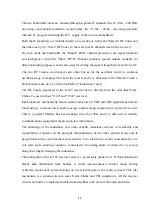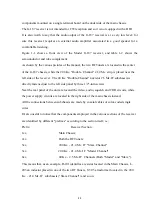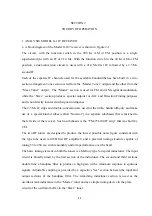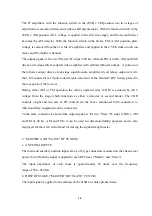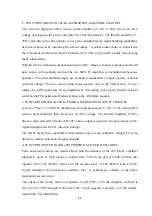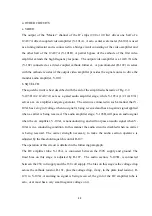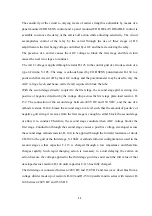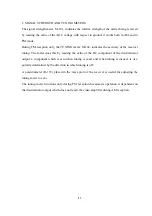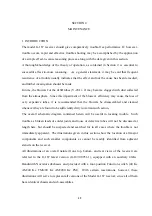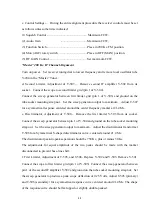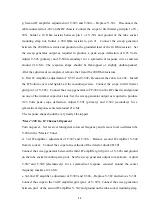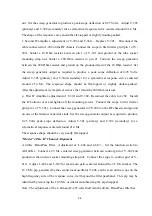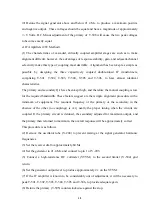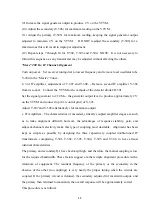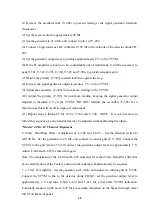
25
The sensitivity of the circuit to varying levels of carrier strength is adjustable by means of a
panel mounted COR SENS control and a panel mounted COR DELAY DISABLE control is
available to remove the delay of the carrier-off action while adjusting sensitivity. The circuit
accomplishes control of the relay by the carrier through the use of three stages of DC
amplification, the first being voltage-controlled by AGC and the last actuating the relay.
The presence of a carrier causes the AGC voltage to block the first stage and this in turn
causes the next two stages to conduct.
The AGC voltage is applied through resistor R-125 to the control grid of a triode section of a
type 6C4 tube, V-105. The stage is cathode biased by COR SENS potentiometer R-134 to a
point such that it is cut off by the AGC voltage and the potentiometer may be used to vary the
AGC voltage level (and hence carrier level) required to block the tube.
With the second stage directly coupled to the first stage, the second stage grid is swung in a
positive or negative direction by the voltage drop across the first stage plate-load resistor, R-
132. The connection of the second stage between 240 VDC and 150 VDC, and the use of a
cathode resistor, R-144, biases the second stage to a level such that the amount of positive or
negative grid swing it receives from the first stage is enough to either block the second stage
or allow it to conduct. Therefore, the second stage conducts when AGC voltage blocks the
first stage. Conduction through the second stage causes a positive voltage, developed across
the second stage cathode resistor, R-144, to be applied through the forward resistance of diode
CR-102 to the grid of the third stage, V-106B. A cathode follower configuration is used in the
second stage so that capacitor C-113 is charged through a low impedance and therefore
charges rapidly. Such rapid charging action is necessary to avoid delaying the carrier-on
action because the voltage applied to the third stage grid does not reach the full value of that
developed across resistor, R-144 until capacitor C-113 has fully charged.
The third stage is connected between 240 VDC and 150 VDC and receives a fixed bias from a
voltage divider made up of resistors R-149 and R-150 in parallel and in series with resistor R-
148 between 240 VDC and 150 VDC.
Summary of Contents for G-187
Page 7: ...7 Figure 1 1 Model G 187 Special Purpose Receiver Front View...
Page 9: ...9 Table 1 2 Semiconductor and Tube Complement...
Page 10: ...10 Table 1 2 Semiconductor and Tube Complement continued...
Page 14: ...14 Fig 2 1 Block Diagram Model G 187 Receiver...
Page 44: ...44 Fig 4 1 Model G 187 Receiver Top View Cover Removed...
Page 45: ...45 Fig 4 2 Model G 187 Receiver Bottom View Covers Removed...
Page 46: ...46 Fig 4 3 Model G 187 Receiver Rear View...
Page 47: ...47 Fig 4 4 Model G 187 Receiver Panoramic Top View Cover Removed...
Page 48: ...48 Fig 4 5 Model G 187 Receiver Panoramic Top View Left Side Cover Removed...
Page 49: ...49 Fig 4 6 Model G 187 Receiver Panoramic Top View Right Side Cover Removed...
Page 50: ...50 Fig 4 7 Model G 187 Receiver Panoramic Bottom View Covers Removed...
Page 51: ...51 Fig 4 8 Model G 187 Receiver Panoramic Bottom View Left Side Covers Removed...
Page 52: ...52 Fig 4 9 Model G 187 Receiver Panoramic Bottom View Right Side Covers Removed...
Page 53: ...53 Table 4 2 Model G 187 Receiver Component Boards Lists...
Page 54: ...54 Fig 4 10 Model G 187 Receiver Large Component Board...
Page 56: ...56 Fig 4 14 Model G 187 Receiver Master Slave RF Tuners Top View...
Page 57: ...57 Fig 4 15 Model G 187 Receiver Master Slave Tuners Bottom View Covers Removed...
Page 58: ...58 Fig 4 16 Model G 187 Receiver Master Slave Tuners Panoramic Bottom View Covers Removed...
Page 59: ...59 Fig 4 17 Model G 187 Receiver Master RF Tuner Bottom View Cover Removed...
Page 60: ...60 Fig 4 18 Model G 187 Receiver Slave RF Tuner Bottom View Cover Removed...
Page 67: ...67 Fig 5 1 Model G 187 Receiver Schematic Diagram Master RF Tuner...
Page 68: ...68 Fig 5 2 Model G 187 Receiver Schematic Diagram Slave RF Tuner...
Page 71: ...71 Fig 5 5 Model G 187 Receiver Schematic Diagram Main Chassis Circuits...
Page 72: ...72 Fig 5 6 Model G 187 Receiver Schematic Diagram Mainframe...
Page 73: ...73 Fig 5 7 Model G 187 Receiver Schematic Diagram Power Supply Circuits...
Page 74: ...74 Fig 5 8 Model G 187 Receiver Schematic Diagram Various Details...


